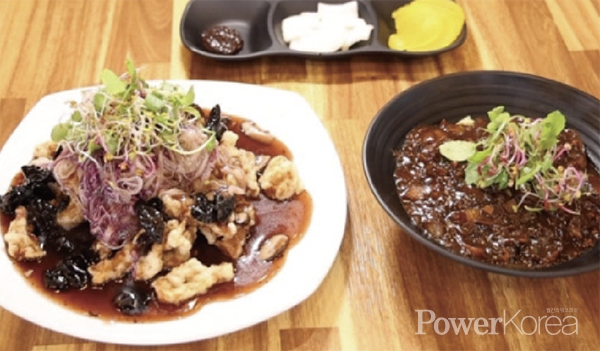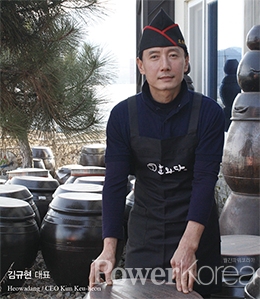 |
||
One in eight Koreans eats Jajangmyeon every day, and it is a popular dish with an average of 6 million bowls consumed daily at Chinese restaurants. However, many people complain of indigestion or bloating after eating it due to the oil and synthetic additives used in Chinese cuisine.
Fermented soybean paste jajangmyeon with taste and health in mind
Jajangmyeon is made by stir-frying pork, onions, potatoes, carrots, and cabbage in oil, adding soybean paste, stir-frying again, and mixing it together. Its price is used as an indicator of the cost of eating out for the common people. Heowadang CEO Kim Keu-heon is a veteran chef who has been cooking Chinese food for over 33 years. The restaurant is located in Miryang-si, Bubuk-myeon. People who usually have poor digestion should avoid Jajangmyeon. Wheat flour contains gluten, which causes bloating or gas after eating wheat flour food. Therefore, Jajangmyeon can easily produce gas, which can cause intestinal problems such as constipation, diarrhea, and abdominal pain.
 |
Chunjang is made by fermenting wheat flour and salt, then mixing boiled soybeans, and mixing caramel into the Chinese soybean paste called cheomyeonjang (趮惄薚) to make it black. Since many chemicals are used in the process of making caramel coloring, it is bound to be harmful to the human body. So, after more than eight years of research and development, he developed a homemade fermented soybean paste that contained absolutely no caramel coloring. His fermented soybean paste is made by soaking domestic soybeans in water for 12 hours, boiling them for 3 hours, letting them cool, adding Aspergillus oryzae, spreading them on a tray, and fermenting them at 37﹎ for 12 hours. At this time, white mold, a beneficial bacteria, appears, and to prevent it from tasting like soybean paste, he stops the fermentation, dries them in a drying room for 30 hours, grinds them finely, mixes them with wheat flour, and kneads them in salt water. After six months of aging in a sterilized jar, this handmade fermented soybean paste is complete.
 |
While developing his fermented soybean paste, he learned of the amazing changes that fermentation has on the human body, which led him to also make fermented vinegar. “Fermented foods are those in which the raw materials have been transformed by the continuous action of microorganisms. Like the soybean paste and kimchi that we commonly eat, they produce beneficial bacteria that promote intestinal movement and aid digestion. That’s why I started making fermented vinegar along with fermented soybean paste.” said Kim. He uses naturally fermented vinegar in all the dishes he makes, and sells mistletoe vinegar, nightshade vinegar, thistle vinegar, yeoju vinegar, mugwort vinegar, apple cider vinegar, grape vinegar, jujube vinegar, and yellow plum vinegar to his customers, all of which have been fermented for over three years. Heowadang’s signature menu made with naturally fermented vinegar are blueberry tangsuyuk, neungi jjambbong, nurungjitang, and chili shrimp. The noodles contain over 40% rice flour, making them easy to digest and filling even after a meal. Customers can also purchase over 30 types of fermented vinegar, fermented soybean paste, fermented cheonggukjang, and rat-eye bean cheonggukjang. Kim said “Fermented food is Korea’s slow food. You have to wait a long time to make proper fermented food. I will do my best to make food that is not only delicious but also healthy by making it honestly in a traditional way.”
김태인 기자 red3955@hanmail.net







